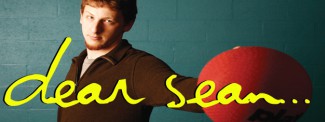Dear Sean,
i would like to know if a 'phantom' hit is allowed? here is an example of what i mean. a ball is returned from square 1 to square 2 (my square). it bounces once and carries into square 4. i approach the ball and act as though i am going to hit it in a certain direction/part of square 4, and just as my hand is about to hit the ball, i stop. i allow the ball to continue in the direction that it was traveling while only slightly grazing the ball with my fingers. the ball, having hardly any of its momentum taken away from it, would continue to bounce in square 4 with the owner of that square out of position because of where i was feigning to hit the ball. is this legal? my friends were claiming that it was an illegal move because you couldn't see any clear alteration in the path of the ball. i contested that as long as i touched the ball (no matter how slight or hard) it counted as a hit. what would the ruling be? - George, 7/14/2009
George, listen, what you are asking is if the player must hit the ball firmly enough for an official to perceive a change in the ball's motion and trajectory.
There are a couple of sports that do this and they all have good reasons for it, and I suppose there should be a similar rule for four square. They do this in other sports to make the players prove that they made contact, otherwise it is just as your friends said, why would they trust you when you say you hit it but they couldn't see it. It's only a short leap for a player to flat out lie about their contact with the ball.
So as the commissioner of the Boston four square league, I will make this change to the official rules as of right now. I think this is a great addition that adds a new level of clarity in an otherwise murky arena of playground games.
But, listen, George. Up until right now, you actually had no rule to obey. So go tell your friends that your play was 100% legit until that Masshole down in Boston revised the official rules. You should glean whatever bragging privileges you can take as the person who single handedly changed the course of four square history.

